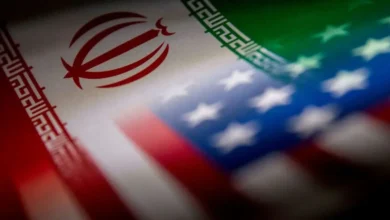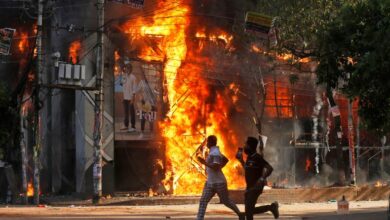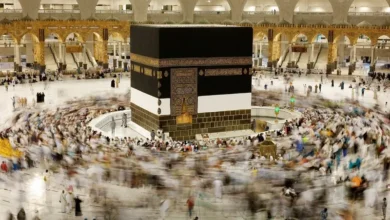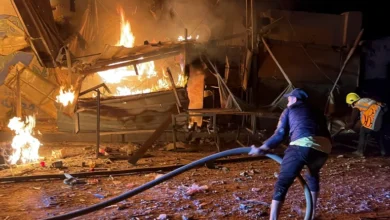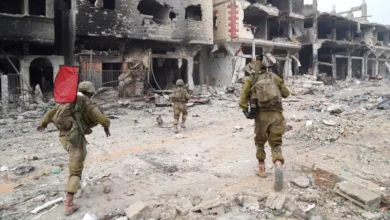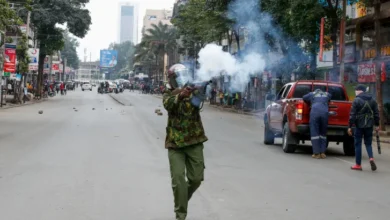In Yemen’s Sanaa, fear and defiance after US bombs
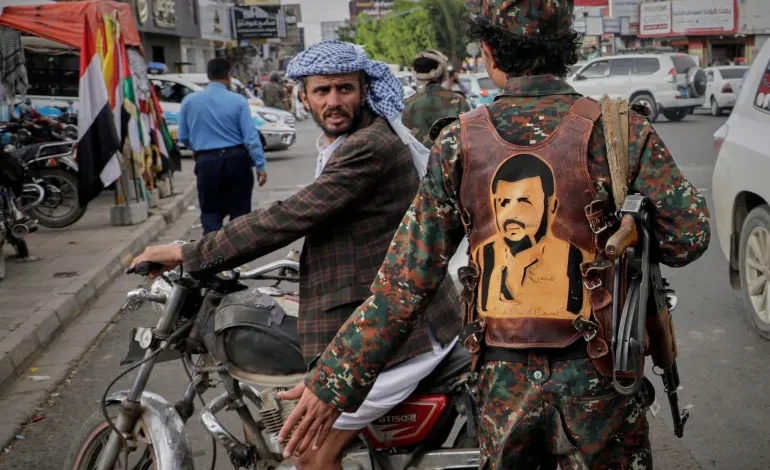
Mukhtar Ahmed was riding his bike in northern Sanaa’s al-Jiraf area when the ground trembled beneath him. Thunderous explosions echoed through the air, followed by the sound of terrified screams.
It was Saturday just after sunset, a time when people were home for iftar during the holy month of Ramadan“I got off the bike and darted towards an alley. I thought it would be impossible to survive,” the 26-year-old restaurant delivery courier told Al Jazeera. “The sheer terror of those explosions could kill.”
Mukhtar had no idea what had caused the deafening roar heard across Yemen’s densely populated capital. But he later came to realise, the United States was bombing Yemen.
A wave of American air strikes had killed more than 50 people.
The bombs pounded the vicinity of the political office of the Houthi rebel group (officially known as Ansar Allah), the de facto rulers of Yemen’s populous northwest.
It marked the beginning of an ongoing US bombing campaign that may usher in a new phase of war and instability for Yemen.Who can stop the US?
On March 7, a week before the US strikes began, the Houthis gave Israel a four-day deadline to lift its blockade on the entry of humanitarian aid to the Gaza Strip. If it did not, the Yemeni group promised to resume attacking Israel-linked ships in the Red Sea in solidarity with the Palestinians in Gaza.
Those attacks had stopped when the now-broken Gaza ceasefire began in January but for the 15 months before that, the Houthis had paralysed shipping in one of the world’s most important waterways and fired projectiles towards Israel.
The United Kingdom and the US launched hundreds of air strikes on what were reportedly Houthi targets, including weapons depots, missile launch pads and airports. Israel has also attacked Yemen.
The ostensible purpose of these attacks was to “degrade” the military capabilities of the Iran-allied Houthis.
But the renewed US air strikes have hit residential areas where senior Houthi members are believed to reside, showing little regard for civilian lives.
Second, the Houthis had not carried out any attacks despite their threat.
With this shift under US President Donald Trump, fears of war, shortages, and displacement haunt Yemeni civilians, who have endured years of hardship since the beginning of the country’s civil war in 2014 between the Houthis and Yemen’s Saudi-backed, United Nations-recognised government.
The conflict on the ground in Yemen has been largely frozen since 2022 with the Houthis and Saudi Arabia involved in negotiations. But those talks have done little to end the humanitarian crisis in the country, where millions of people are hungry.Many Yemenis now believe things are going to get worse, a fear strengthened by Trump’s rhetoric.
“Hell will rain down upon you like nothing you have ever seen before,” the US president said in a threat to the Houthis.
And for Mukhtar, he fears Gaza has set a precedent for how bombing campaigns are conducted in the region.
“The US is like Israel, and Hamas is like the Houthis,” Mukhtar said, “so if the US-Houthi war continues, the US will do to Sanaa like what Israel has done to Gaza. Who will stop them?”


